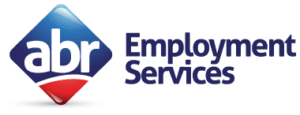Heat Illness Prevention During Hot, Humid Weather
Heat Illness Prevention
Summer has arrived in Wisconsin and in Winona, MN in full force. Very hot days and high humidity are in the forecast in the weeks ahead. Heat illness prevention is your best defense.
In this blog we cover the dangers of heat, ways to stay cool and safe as temperatures rise, and how to identify and treat heat related illness. Heat stress happens when the body is unable to cool off by sweating. Heat illnesses such as heat rash, muscle cramps, heat exhaustion and heat stroke can occur.
Due to Covid-19 however, preventing heat stress will be more challenging this summer. Wearing a face mask/covering to protect you and others from getting or spreading Covid-19 may make it harder to cool off. And, the use of fans at work stations is not recommended as they spread virus droplets through the air to others.
Please check with your supervisor about worksite break schedules to help combat heat related illnesses. Familiarize yourself with the signs, symptoms and treatment of heat related illness. During hot weather, monitor yourself and co-workers for signs and symptoms.
Heat Illness Prevention
Here are a few tips to prevent heat illness:
- Block or avoid direct sunlight or other heat sources.
- Use cooling fans or air conditioning however use of fans at individual/personal work stations is not recommended at this time as it can spread the COVID-19 virus.
- Take regular breaks in shaded areas.
- Drink plenty of water or high-electrolyte fluids. Water bottles are suggested as the use of public drinking fountains is a risk during the COVID-19 pandemic.
- Wear lightweight, light-colored, and loose-fitting clothing. Face covering choice should be breathable but also help prevent the spread of the COVID-19 virus.
- Avoid alcohol, caffeinated drinks, and heavy meals.
If you detect signs of heat exhaustion, a supervisor or appropriate individual with first aid training should be notified.
Heat Rash
Heat rash is a cluster of small red pimples or blisters. It’s caused by excessive sweating, which leads to clogged pores and, if untreated, to infection. Treat heat rash by cleansing and drying the affected area. Applying calamine lotion may help reduce itching.
Heat Cramps – Signs, Symptoms & Treatment
Heat cramps are painful spasms of leg, arm, or abdominal muscles, heavy sweating, and thirst. It’s caused by electrolyte deficiencies during or after strenuous physical activity, due to extended periods of intense sweating. Treat heat cramps by stopping all activity, sitting in a cool place, drinking plenty of water or high-electrolyte fluids, and waiting for a few hours after the cramps have subsided before engaging in any strenuous physical activities.
Heat Exhaustion – Signs, Symptoms & Treatment
Heat exhaustion symptoms are fatigue, profuse sweating, weak and rapid heartbeat, headaches, nausea, confusion, loss of coordination, muscle weakness, dizziness, or fainting. It’s caused by dehydration, inability to tolerate high temperatures, strain on the circulatory system, and reduced blood flow to the brain. Treat heat exhaustion by moving to a cool, shaded or air-conditioned area. Cool the affected individual by fanning, misting with water, or applying ice packs. Give cool (not cold) water only if the individual is conscious.
Heat Stroke – Signs, Symptoms & Treatment
Heat stroke symptoms are core body temperature exceeding 104° F, hot skin with a lack of perspiration, strong and rapid pulse, nausea, confusion, dizziness, seizures or convulsions, or fainting. Heat stroke is life-threatening! Notify a supervisor and call 911 immediately. While waiting for medical personnel to arrive:
‒ Move the affected person to a cool, shaded or air-conditioned area.
‒ Give cool (not cold) water only if the individual is conscious.
‒ Cool the individual by fanning, misting with water, or applying ice packs.
‒ If necessary, loosen or remove heavy clothing.
Staying Safe At Work
The Wisconsin Department of Health Services created this video about the dangers of heat, and the best ways to stay cool and safe as temperatures rise.
For more information about workplace safety, please see the ABR Employee Handbook. If you are unable to locate your Employee Handbook, please contact any ABR representative to request a copy.
